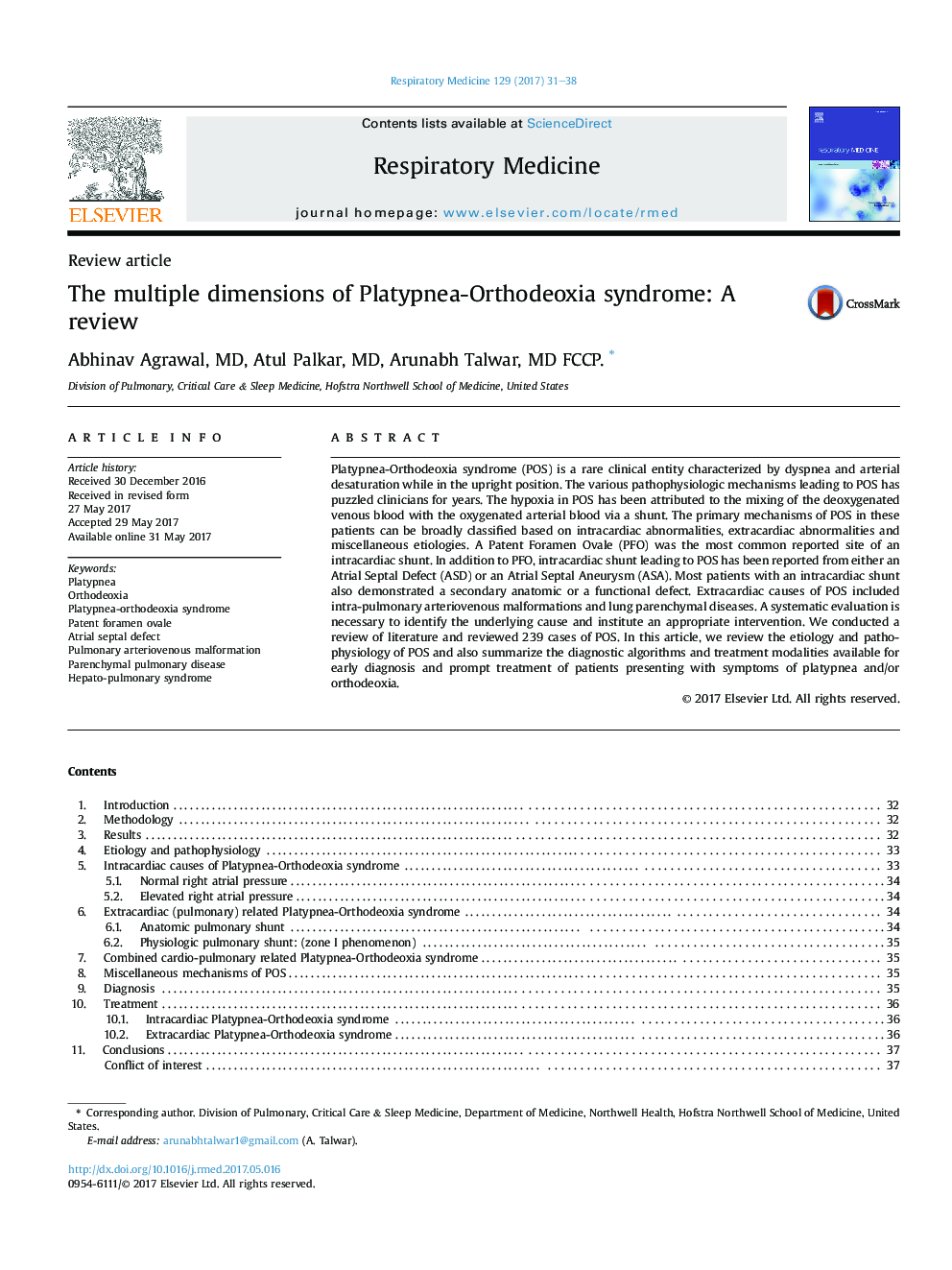| Article ID | Journal | Published Year | Pages | File Type |
|---|---|---|---|---|
| 5724845 | Respiratory Medicine | 2017 | 8 Pages |
â¢Platypnea-Orthodeoxia syndrome is a characterized by desaturation while in the upright position, relieved in the recumbent position.â¢Mechanisms of POS can be classified based on intracardiac abnormalities, extracardiac abnormalities and miscellaneous etiologies.â¢Intracardiac abnormalities include a Patent Foramen Ovale, Atria Septal Defect or an Atrial Septal Aneurysm.â¢Most patients with an intracardiac shunt also demonstrated a secondary anatomic or a functional defect.â¢Extracardiac causes of POS included intra-pulmonary arteriovenous malformations and lung parenchymal diseases.â¢A systematic evaluation is necessary to identify the underlying cause and institute an appropriate intervention.
Platypnea-Orthodeoxia syndrome (POS) is a rare clinical entity characterized by dyspnea and arterial desaturation while in the upright position. The various pathophysiologic mechanisms leading to POS has puzzled clinicians for years. The hypoxia in POS has been attributed to the mixing of the deoxygenated venous blood with the oxygenated arterial blood via a shunt. The primary mechanisms of POS in these patients can be broadly classified based on intracardiac abnormalities, extracardiac abnormalities and miscellaneous etiologies. A Patent Foramen Ovale (PFO) was the most common reported site of an intracardiac shunt. In addition to PFO, intracardiac shunt leading to POS has been reported from either an Atrial Septal Defect (ASD) or an Atrial Septal Aneurysm (ASA). Most patients with an intracardiac shunt also demonstrated a secondary anatomic or a functional defect. Extracardiac causes of POS included intra-pulmonary arteriovenous malformations and lung parenchymal diseases. A systematic evaluation is necessary to identify the underlying cause and institute an appropriate intervention. We conducted a review of literature and reviewed 239 cases of POS. In this article, we review the etiology and pathophysiology of POS and also summarize the diagnostic algorithms and treatment modalities available for early diagnosis and prompt treatment of patients presenting with symptoms of platypnea and/or orthodeoxia.
